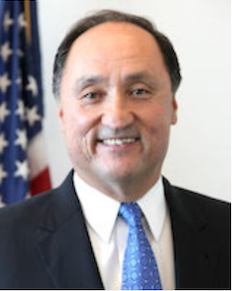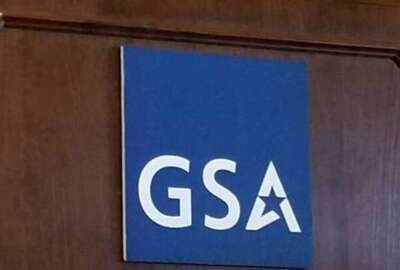GSA’s financial ship is shaped by Badorrek’s seven-year tenure as CFO
Gerard Badorrek, who left after more than seven years as the CFO at GSA, said through a series of major changes, the agency’s financial management is in better...
Best listening experience is on Chrome, Firefox or Safari. Subscribe to Federal Drive’s daily audio interviews on Apple Podcasts or PodcastOne.
When Gerard Badorrek arrived at the General Services Administration more than seven years ago to be its CFO, he found an organization in disarray.
There were 14 different financial organizations managing GSA’s financial data and systems. There were more than 900 employees reporting to different CFOs across the business units and headquarters.

Badorrek, who recently left federal service after seven years as the CFO at GSA, said he’s most proud of how he empowered the CFO organization to reshape and revitalize the agency’s financial management efforts.
“Today we have roughly about 540 employees. We transferred 195 to the USDA’s National Finance Center. But the organization’s gotten more productive, more effective and more efficient,” he said in an interview with Federal News Network. “We’ve got some improvements in efficiencies and productivity and we won over the skeptics as we accomplished a transformation.”
Badorrek did a six-month evaluation of the current state of GSA financial management when he arrived in 2014 and began the transformation.
“We went from 11 regional organizations to four zones. We recompeted the top four levels of management, every zone had the same structure, and they were able to collaborate on best practices. This new structure was put in place within one year and really made a difference in our operational results in the audit, where we were at 90% and now are at 99%,” he said. “We have created over 50 dashboards. We have hundreds of metrics in areas like fund certification, accounts payable, payroll operations and robotics process automation (RPA) implementation. The organization knows that these results are being reported every month and just for the fact that you have these dashboards, they’re paying attention and the results have been good.”
Badorrek said the CFO’s office has reduced costs and staffing by 23%, while at the same time providing more value to the other mission areas.
Audit findings down by 80%
He credited the employees as a major reason for these improvements.
“The employees led a lot of process standardization, especially in the regional organization. I set up the structure, but the employees were empowered and excited to come up with standard processes in the 11 regions,” Badorrek said. “We actually created community practices within the CFO organization on each of the functional areas. In two years, we had standardized 45 processes.”
Now, GSA’s financial audits don’t have any material weaknesses or significant weaknesses. It also has reduced the number of audit findings by 80%.
But Badorrek said the real sign of change for the CFO’s organization came when he saw the employee satisfaction score increase 21 percentage points, reaching 86% in 2021 from 65% in 2015.
“The Partnership for Public Service’s best places to work rankings found out of the 410 organizations we were number 19, which was the highest rated finance organizations,” he said.
Mehul Parekh is the acting CFO for GSA until the agency hires a permanent one.
Another reason for GSA’s transformation was its rapid recognition of the power of RPA.
Badorrek said the employees’ desire to be innovative and try RPA quickly led to quick wins and GSA becoming a leader across government.
“We’ve done over 100 automations, and we don’t do them just for the CFO organization, we do them across the agency. We have saved close to 400,000 hours of annualized capacity,” he said.
First foray in to public sector
Badorrek initially wasn’t sure he should take the job at GSA. He had no previous experience in the public sector, working for MCI Communications, Xerox and Stanford Solutions.
“I actually talked to some of my good friends in the private sector, and most of them said, ‘Gerard, don’t do this government role.’ And I kept on asking for advice, but when they would give me their advice, I would argue with them,” he said. “Finally one of my friends and business associates told me, ‘Gerard, your heart is in public service, you should go and do this job.’ I finally got the answer that I wanted.”
He said he knew the challenges he faced like a risk averse culture and skepticism that change happens quickly, if at all.
“But I knew the same factors that inhibit the public sector. I thought that it would be interesting to come in and see what we could do with the organization and help bring the many different parts of the finance organization that were separate together in unified organizations. That was really what attracted me,” Badorrek said.
Badorrek said he’s not retiring, but after a short vacation will look to the private sector for his next opportunity.
He said the one big change he would like to see is around the federal budget process—a common frustration for many executives.
“In the private sector, you have this flexibility to go and if you learn things last year in the current quarter, you can change how you’re spending money. In the federal government, agencies are submitting budgets two years ahead of time, they don’t know what they can spend until that year. If you think about successful companies, they need to be agile and they need to have five product failures for one product success. We need more of that in the federal government,” he said. “That re-engineering of the federal budget process would help the government make better decisions and be more agile. The other thing that I think is a nice change would be bringing more potential critical thinkers at all levels. So oftentimes the focus is who’s got the best tactical experience rather than who has got the thinking ability to solve a problem that they never encountered before.”
He also said moving the CFO organization away from being about compliance, which is important, but it can’t be its only focus.
“If you really want to move the ball, think about how you can drive and generate value for the overall federal government and through your agency,” he said.
Copyright © 2025 Federal News Network. All rights reserved. This website is not intended for users located within the European Economic Area.
Jason Miller is executive editor of Federal News Network and directs news coverage on the people, policy and programs of the federal government.
Follow @jmillerWFED






